Shelley Mannell, BScPT, Julie Wiebe, BSc, MPT
The following is a summary of a more formal case study (submitted for future publication) of the response of a 12-year-old boy, Michael (name changed for privacy), had to the Dynamic Core for Kids approach. Co-created with Shelley Mannell, this pediatric application of the core program developed for adults, integrates the pelvic floor and diaphragm into core rehabilitation and fitness programs. These photos actually capture his progress better than our words! His response was exciting and we are seeing a similar response in kids and adults with a variety of diagnoses.
Case Study of a 12 year old male with Cerebral Palsy:
Initial Presentation:
Michael had a stroke at birth that primarily impacted his right arm and leg, causing them to be weak and tight (spastic). His trunk was very weak and he experienced compensatory left-sided arm and leg deficits as well. The resulting postural weakness (see photos below) made it difficult for him to sit still for longer than 10 minutes. In addition, he had trouble keeping his eyes at the horizon resulting in an elevated gaze. This made social eye contact, and visual demands of reading the chalkboard at school challenging. Michael had difficulty maintaining balance when moving from sitting to standing and had falls due to poor balance in walking. His primary resource for creating stability at his center for seated and standing postures and to help with movements was to hold his breath.
Intervention:
We utilized a holistic approach to restore his core function. The adult physical therapy literature has demonstrated that the components of the inner core (Diaphragm, Transversus Abdominis, Pelvic Floor, and Multifidus) all become more active automatically in a neutral alignment of the pelvis and the ribcage. Thus, we initially focused on creating a core-optimizing alignment through the use of pillows, wedges and towels. In these core-optimizing positions, we helped Michael access his inner-core components through the use of blow toys to stimulate his diaphragm. The diaphragm has been shown to elicit a response for the other elements of the inner core. Michael was encouraged to use the mantra “Blow before you go” to elicit core support for his posture before each repetition of his therapeutic activities, each transitional movement, and as he participated in play. Following this training approach, his core strengthened and began to hold his alignment without the need of additional propping from seating aides. The improved alignment improved the activation of his core during daily activity, school work, and play. (Michael does use a wedge at school to improve his tolerance for full day activity).
Results:
As seen in the series of seated photos, Michael made a significant improvement in maintaining a more neutral postural alignment both with and without seating support. Michael now sits independently for school work without time limitations. Improved posture also resulted in a significant change in his eye gaze positioning, which has the potential to positively impact both social interaction and school work success. His seated alignment facilitates his ability to rise from sitting to standing without using his arms. Similar development is evident in the standing photos. His parents noted that Michael displayed improved standing balance.
Treatment was provided over a series of weekly 1 hour sessions for 2 months to address sitting posture.
September 2009 November 2009 November 2009
Treatment was subsequently provided for another series of weekly 1 hour sessions for 2 months to address standing posture.
September 2009 Treatment Jan- March 2010
Conclusion:
This case illustrates the possibilities for improved postural control and movement capacity in a child with CP using the Dynamic Core for Kids approach.
For more detailed description of the study please see Shelley Mannell’s blog at www.heartspacept.com. For more information on the clinical approach please see http://interiorfitness.com/services/for-pros/ . Photographs used with permission.
Bibliography
Claus AP, Hides JA, Moseley GL, Hodges PW. 2009. “Different ways to balance the spine: subtle changes in sagittal spinal curves affect regional muscle activity.” Spine 34(6): E208-14.
Hodges PW, Butler JE, McKenzie DK, and Gandevia SC. 1997. “Contraction of the human diaphragm during rapid postural adjustments.” The Journal Of Physiology 505 (Pt 2): 539-548.
Hodges PW and Gandevia SC. 2000. “Changes in intra-abdominal pressure during postural and respiratory activation of the human diaphragm.” The Journal of Applied Physiology 89: 967-976.
Hodges PW, Sapsford R, and Pengel LH. 2007. “Postural and respiratory functions of the pelvic floor muscles.” Neurourology And Urodynamics 26, no. 3: 362-37
Liu WY, Zaino CA, McCoy SW. 2007. Anticipatory postural adjustments in children with cerebral palsy and children with typical development. Pediatric Physical Therapy 19(3): 188-95.
Sapsford RR, Richardson CA, Maher CF, and Hodges PW. 2008. “Pelvic floor muscle activity in different sitting postures in continent and incontinent women.” Archives of Physical Medicine & Rehabilitation 89, no. 9: 1741-1747.
Van der Heide JC, Begeer C, Otten B et all. 2004. Postural control during reaching in preterm children with cerebral palsy. Developmental Medicine and Child Neurology 46: 253 – 266.
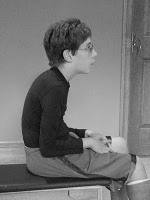
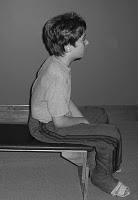
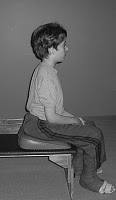
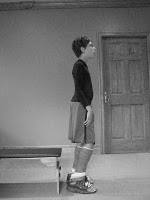
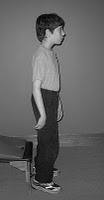
3 thoughts on “Dynamic Core in Kids- Case Study 12-year-old Male”
The biomechanical chain from the core downward is of crucial importance in helping dancers continue to dance. The top of this chain is of course the core..Most people think the core consists of the abdominal muscles. The core is not only cylindrical the abs but also has a top and bottom.
Awesome post ladies – there is so much we can adapt for kids as far as core goes. I don’t treat kids in my practice but I have a now 18 y.o daughter with Kabuki Syndrome who is low tone. We have spent years working on strength and stability but it is a challenge due to her communication difficulties. Interested to see more of what you do with CP kids and wondering if you have any experience with Kabuki Syndrome?
Thanks for your comment, Fiona! Shelley and I teach a con ed course called Dynamic Core for Kids, which teaches an alternative approach to activating the inner core in kids with significant motor, sensory, neuro and cognative challenges. It uses the diaphragm and pelvic floor as the access point to the core instead of abdominals. The course is a peds friendly adaptation of what I teach in my adult courses. I like to say I bring the core and Shelley brings the peds. You can check out course descriptions here http://bit.ly/lMifBo and upcoming classes here http://bit.ly/cUuyAB.
I am not familliar with Kabuki Syndrome, but Shelley probably is. Her website is http://www.heartspacept.com. I will shoot her a note and see if she can hop on and leave a comment here, too, to see if she can help.
Take care-Julie
Comments are closed.
This blog provides general information and discussion about medicine, health and related subjects. The words and other content provided in this blog, and in any linked materials, are not intended and should not be construed as medical advice. If the reader or any other person has a medical concern, he or she should consult with an appropriately licensed physician or other health care worker.
Never disregard professional medical advice or delay in seeking it because of something you have read on this blog or in any linked materials. If you think you may have a medical emergency, call your doctor or 911 immediately.